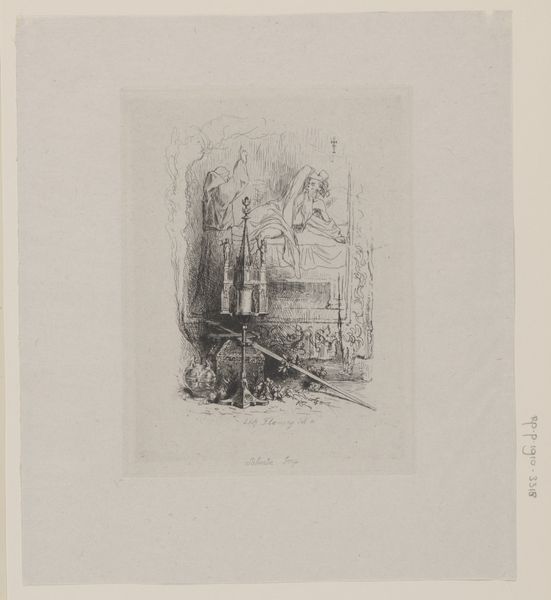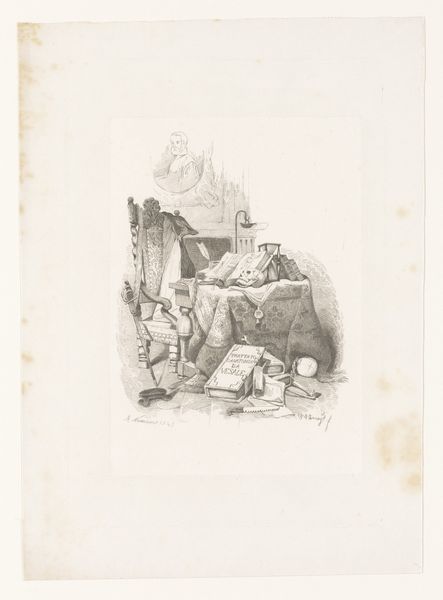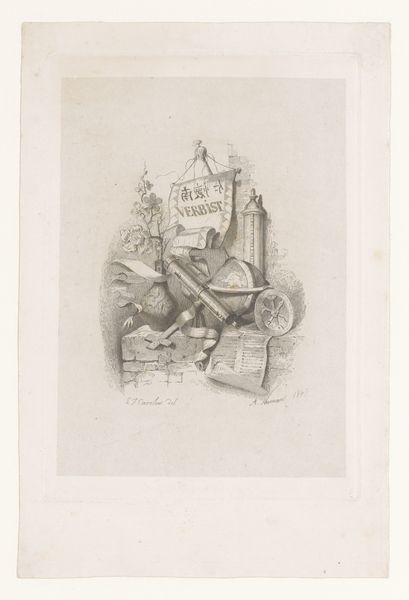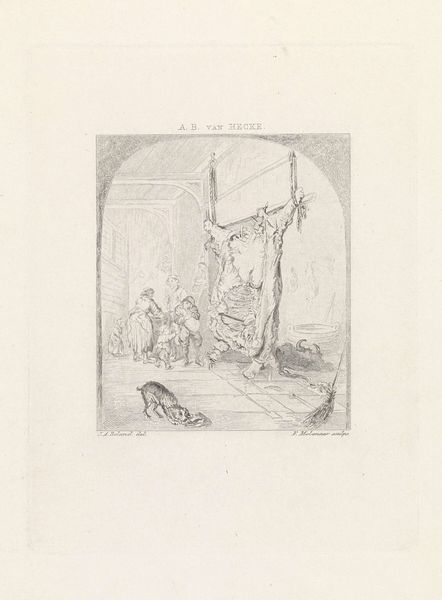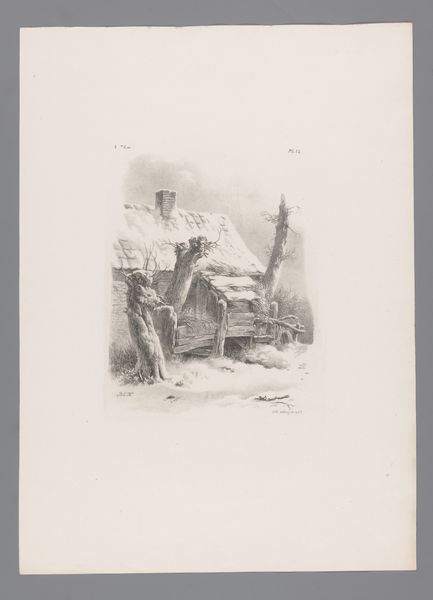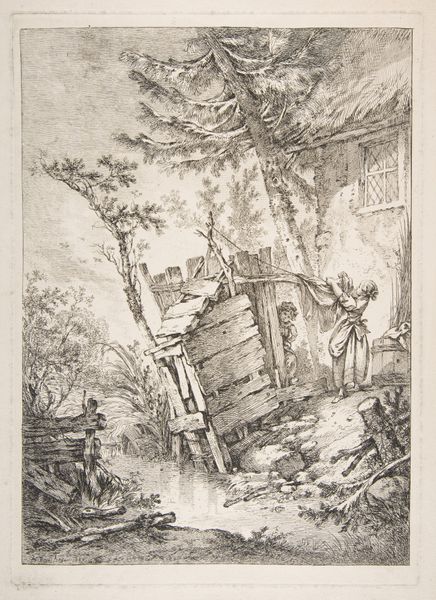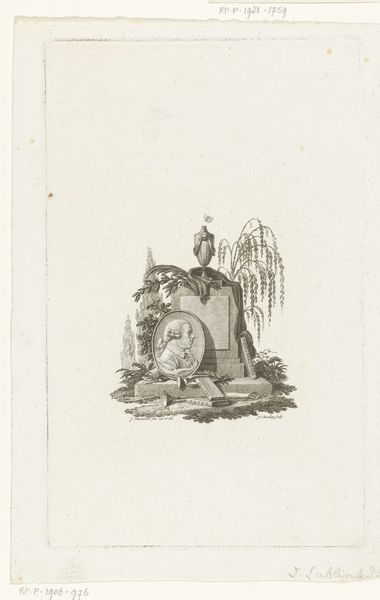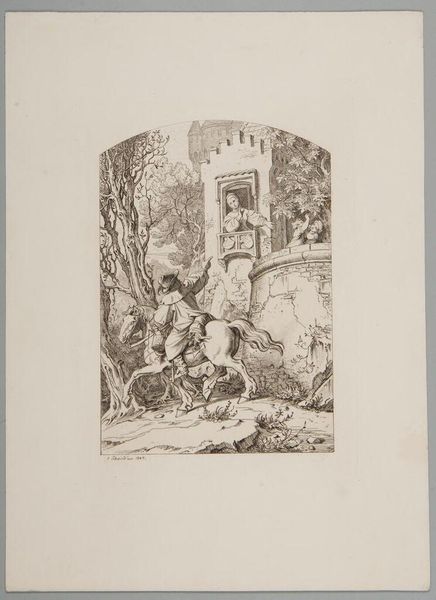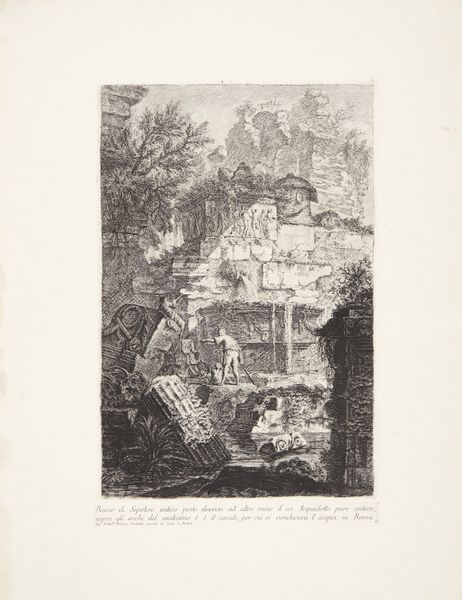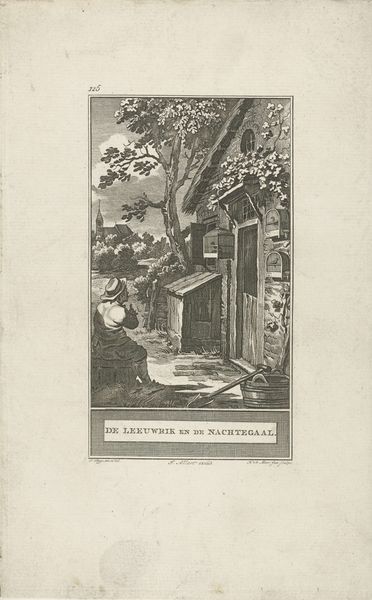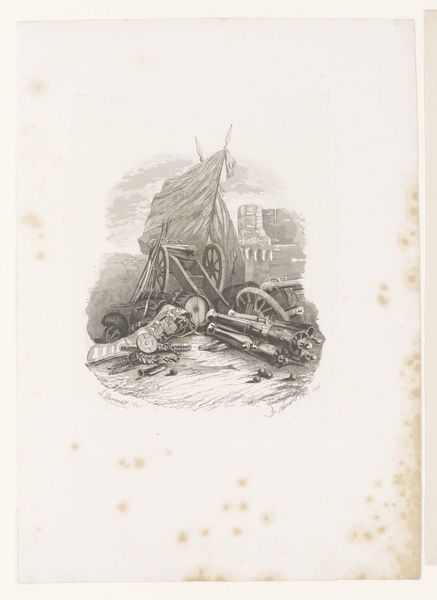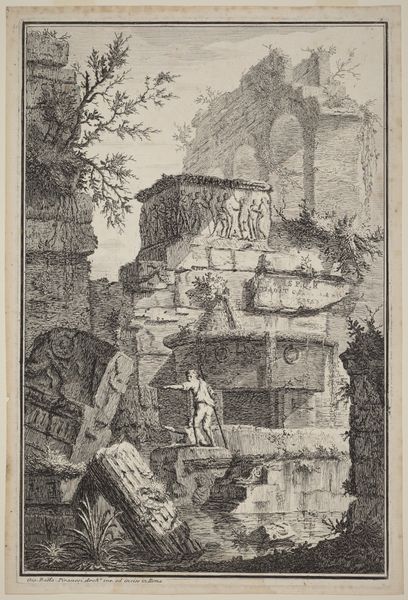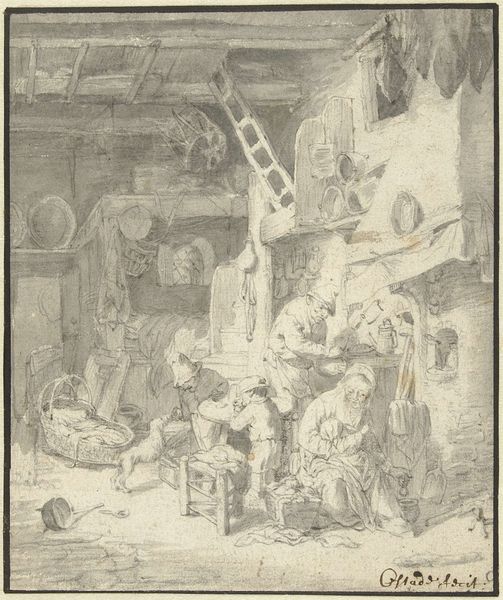
Letter I en een aantal objecten uit de negentiende eeuw, waaronder een tandwiel en een stoomlocomotief 1836 - 1912
0:00
0:00
print, etching
# print
#
etching
#
geometric
#
history-painting
#
modernism
Dimensions: height 140 mm, width 102 mm
Copyright: Rijks Museum: Open Domain
Editor: So, here we have Isaac Weissenbruch's etching, "Letter I en een aantal objecten uit de negentiende eeuw, waaronder een tandwiel en een stoomlocomotief," dating between 1836 and 1912. The composition feels like a still life, but one dedicated to the industrial revolution. What do you make of this unusual grouping? Curator: It’s compelling precisely because of that juxtaposition. Look at how Weissenbruch arranges these objects – the letter “I,” the gear, the locomotive. He’s not just depicting them, he’s staging a conversation about labor and progress. Notice the material contrast. The print medium itself becomes part of the story: a mass-produced image reflecting on mass production. Editor: I hadn't considered the etching process itself as contributing to the message. Curator: Exactly! It makes me consider who the intended consumer was. This print, unlike a unique painting, would be widely available. Who had access to it, and what social class are being evoked? Were these objects meant to be symbols of pride, or of potential displacement, reflecting the changing face of work? The locomotive represented technological advancements, but also a changing social landscape fueled by industry. Editor: It’s interesting to think about the different social reactions to these industrial tools and advances back then. Were people excited? Scared? It must’ve been a mix. Curator: Indeed. How the materials and images circulated reveals as much as what they represent. These images shaped—and were shaped by—the burgeoning industrial consciousness. This is all material that could be interpreted by diverse demographics. Editor: So much to unpack from just one print! I see it differently now. Curator: And hopefully you now notice how critical examining materiality can reveal subtle meanings that enrich our understanding of artwork production, accessibility and consumption during the artist’s timeline.
Comments
No comments
Be the first to comment and join the conversation on the ultimate creative platform.
